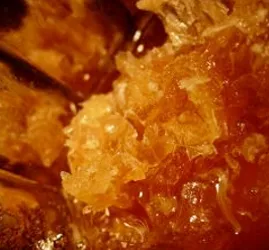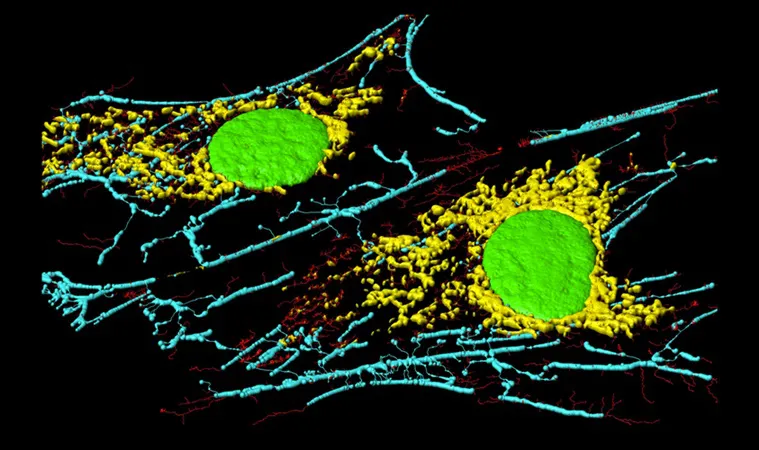
SCUBE3 Strongly Stimulates Hair Growth
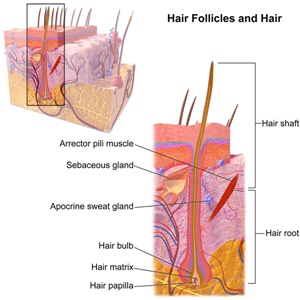 lausen.com staff (2014). "Medical gallery of Blausen Medical 2014". WikiJournal of Medicine 1
lausen.com staff (2014). "Medical gallery of Blausen Medical 2014". WikiJournal of Medicine 1 The potent signaling molecule SCUBE3 just might reshape the entire future of hair loss for men and women alike.
The Future of SCUBE3 Is A Few Years Away, But It Offers Great Promise
Although there is great hope for the future of SCUBE3, it won't be happening immediately.
Scientists have found that SCUBE3 was being expressed in the mutant mice but not in the controls.
That didn’t mean anything on its own, however, because SCUBE3 could’ve just been a bystander molecule.
A Series of Experiments Were Performed With This Protein
 Image by Sholto Ramsay - Unsplash.com
Image by Sholto Ramsay - Unsplash.com1. They deleted it from mice.
2. They injected it into normal mice.3. They injected it into mice with human hair follicles grafted onto their skins.
The normal mice, as well as the ones with human hair follicles, showed that SCUBE3 drives hair growth and, in a crucial manner, as shown by experiments, human hair growth.
A Very Hair Mouse
"At first, nothing would happen. But then, as days went by, all of a sudden, boom, the mutant mouse grew hair like there was no tomorrow, and that was the 'Ah ha' moment."
"Then we knew we had a really hairy mouse," said Maksim Plikus, Ph.D. UC Irvine professor of developmental & cell biology (chief scientific officer of hair biotech company Amplifica) and one of the study's authors.
A key aspect of hair loss with age is the aging of the hair follicle. Ordinarily, hair follicle renewal is maintained by the stem cells associated with each follicle.
Hair Follicle Aging Response To Accumulated DNA Damage
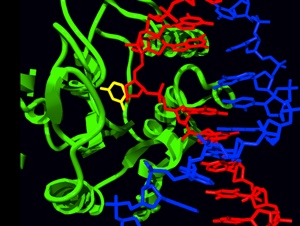 Human uracil-DNA glycosylase is bound to its DNA substrate. Tim Vickers at English Wikipedia - Transferred from en Wikipedia to Commons.
Human uracil-DNA glycosylase is bound to its DNA substrate. Tim Vickers at English Wikipedia - Transferred from en Wikipedia to Commons.Aging of the hair follicle appears to be primed by a sustained cellular response to the DNA damage that accumulates in renewing stem cells during aging.
This damage response involves the proteolysis of type XVII collagen by neutrophil elastase in response to DNA damage in hair follicle stem cells.
Proteolysis of collagen leads to the elimination of the damaged cells and, consequently, to terminal hair follicle miniaturization.
In June 2022, the University of California, Irvine, announced that researchers have discovered that hedgehog signaling in murine fibroblasts induces new hair growth.
It also triggers hair multiplication. Hedgehog activation increases fibroblast heterogeneity. It drives new cell states.
A New Signaling Molecule Called SCUBE3
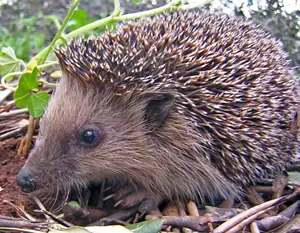 A new signaling molecule called SCUBE3 potently stimulates hair growth. It may offer therapeutic treatment for androgenetic alopecia (AGA, pattern baldness).
A new signaling molecule called SCUBE3 potently stimulates hair growth. It may offer therapeutic treatment for androgenetic alopecia (AGA, pattern baldness).
The Hedgehog signaling pathway is one of the key regulators of animal development and is present in all bilaterians.
The pathway takes its name from its polypeptide ligand, an intracellular signaling molecule called Hedgehog (Hh) found in fruit flies of the genus Drosophila.
Genes That Are Said To Resemble Hedgehogs
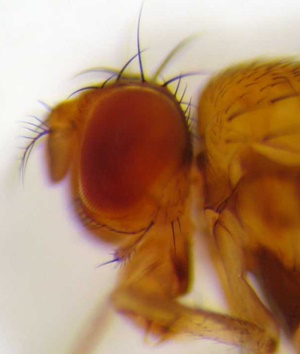 Fruit fly larvae lacking the Hh gene are said to resemble hedgehogs.
Fruit fly larvae lacking the Hh gene are said to resemble hedgehogs.
Hh is one of Drosophila's segment polarity gene products, involved in establishing the basis of the fly body plan.
Larvae without Hh are short and spiny, resembling the hedgehog animal.
The molecule remains important during the later stages of embryogenesis and metamorphosis.
The Takeaway?
 principal signaling niche.
principal signaling niche.- Hedgehog signaling in murine fibroblasts induces new hair growth and hair multiplication.
- Hedgehog activation increases fibroblast heterogeneity and drives new cell states.
- TGF-β pathway downstream of dermal Hedgehog mediates hair growth hyper-activation.
- SCUBE3 is a new mesenchymal niche factor that activates hair growth.
Overactivation of Hedgehog signaling in the niche dramatically accelerates hair growth. It induces follicle multiplication in mice.
These recent scientific discoveries bring great new hope for reversing and regrowing hair in those with androgenetic alopecia (AGA).
The bad news? It may not happen immediately.
Best wishes.
Social Media Network Information
Please follow us on Twitter at: https://Twitter.com/HairBoutique. I look forward to meeting new people from all walks of Twitter and learning from their Tweets.






